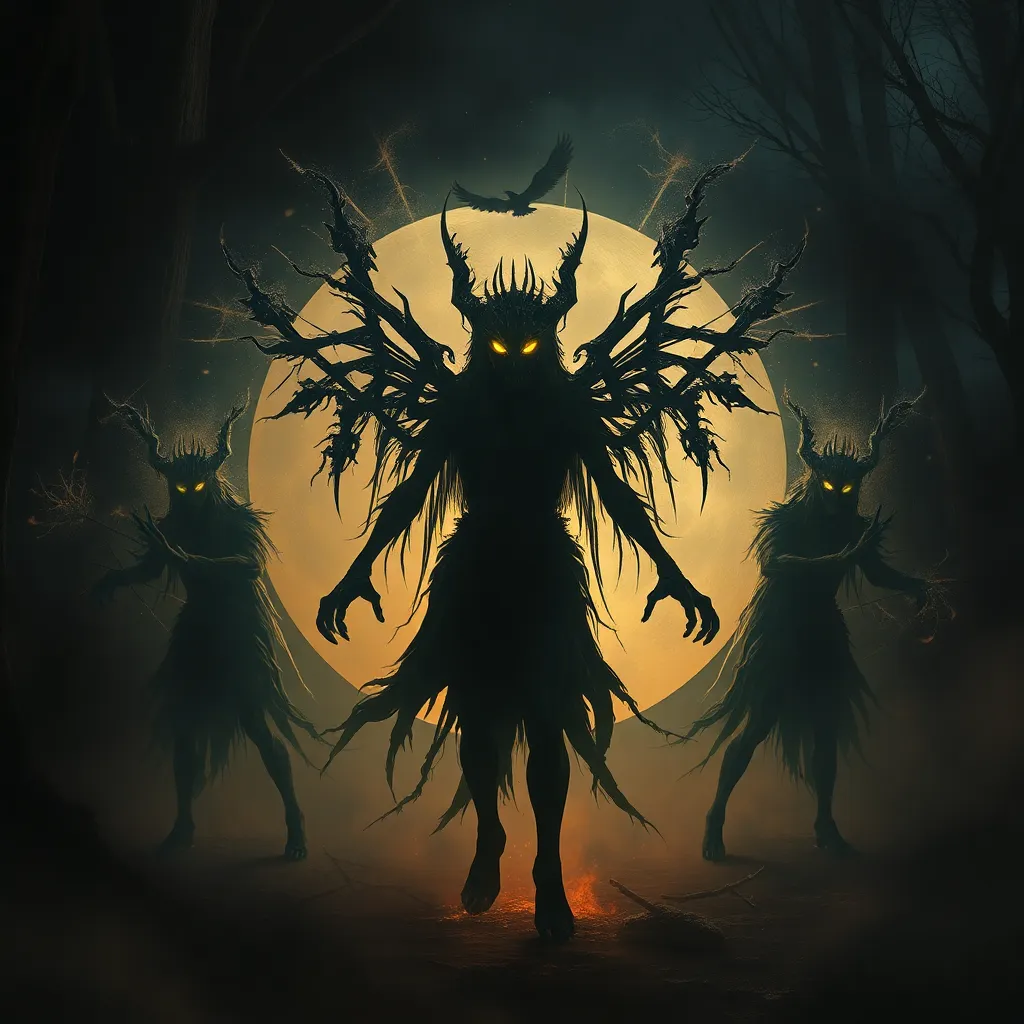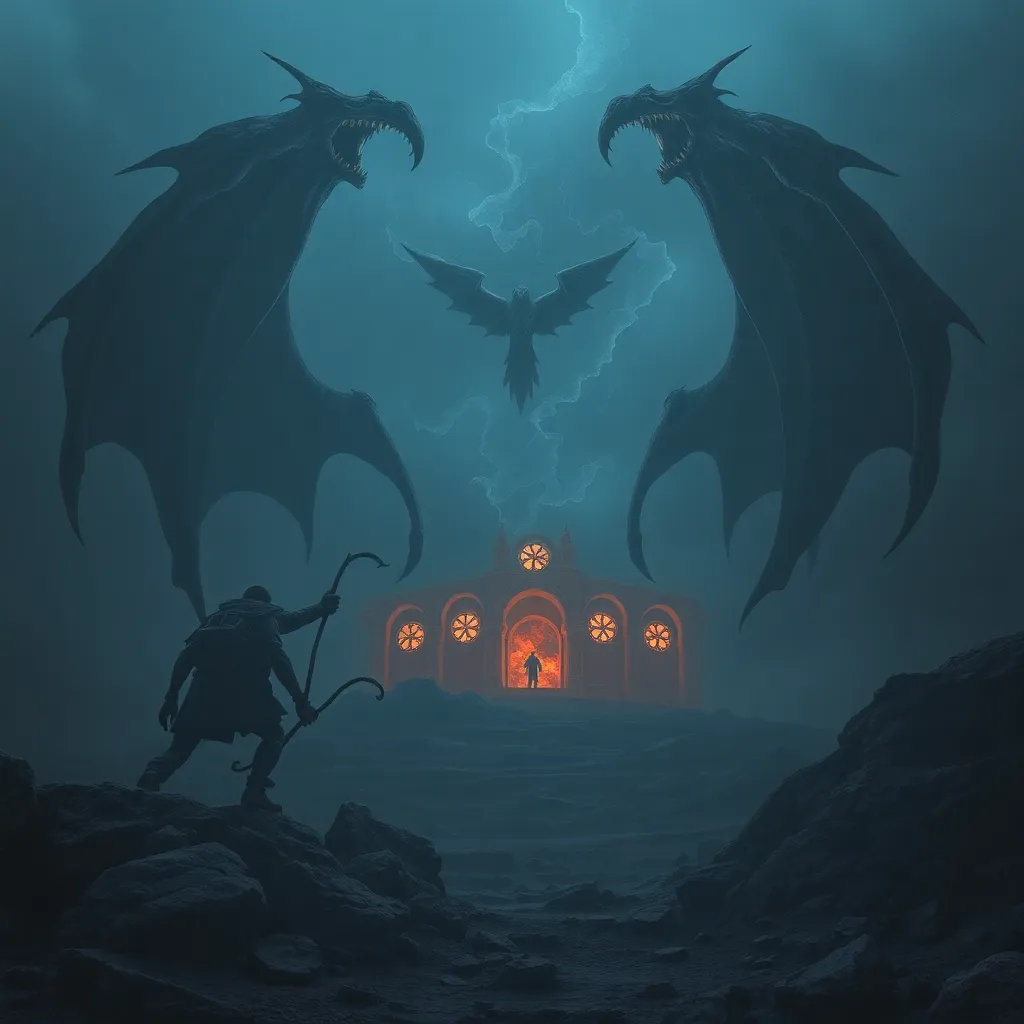The Children of the Night: The Malevolent Spirits of German Folklore
I. Introduction
German folklore is a rich tapestry of myths, legends, and tales that have been passed down through generations. These stories not only entertain but also encapsulate the cultural values and historical experiences of the German people. Within this folklore, the concept of the “Children of the Night” emerges as a prominent theme, representing the malevolent spirits that lurk in the shadows of traditional narratives.
This article aims to explore the concept of these malevolent spirits, examining their characteristics, notable examples, and the cultural significance they hold in the context of German folklore. By delving into the historical roots and modern interpretations of these figures, we hope to shed light on their relevance in both past and present societies.
II. Historical Context of German Folklore
The origins of folklore in German culture can be traced back to ancient traditions and the oral storytelling practices of early communities. Folklore served as a means of preserving history, moral lessons, and cultural identities during times when literacy was not widespread.
The role of oral tradition has been crucial in keeping these tales alive, with stories being told around fires, during harvests, and at community gatherings. Over time, these tales evolved, reflecting the changing landscapes of German society.
Historical events, such as the rise of Christianity and the impact of the Reformation, also influenced the development of folklore. Many pagan beliefs were either integrated into Christian narratives or suppressed, leading to a unique blend of beliefs that shaped the malevolent spirits of German folklore.
III. Characteristics of Malevolent Spirits
Malevolent spirits in German folklore share several common traits, often embodying fear and the unknown. They are typically associated with darkness, deception, and the supernatural, evoking a sense of dread among those who encounter them.
Psychological interpretations of these spirits suggest that they reflect societal fears, anxieties, and the struggle between good and evil. Culturally, these spirits serve as cautionary figures, warning individuals against immoral behavior or straying from societal norms.
In contrast to the benevolent spirits, which are often depicted as protectors or helpers, malevolent spirits embody chaos and mischief. Their actions serve to challenge the order established by benevolent forces, reinforcing the duality of good and evil within folklore.
IV. Notable Malevolent Spirits
A. The Nachtkrapp (Night Raven)
The Nachtkrapp, or Night Raven, is a sinister figure in German folklore that represents death and misfortune. Often depicted as a large, ominous bird, the Nachtkrapp is said to appear before tragic events, warning of impending doom.
Symbolically, the Nachtkrapp reflects humanity’s fear of the unknown and the inevitability of death. Its cultural significance lies in its role as a harbinger, reminding people of the fragile nature of life.
B. The Alp (Nightmare Spirit)
The Alp is a malevolent spirit known for causing nightmares by sitting on the chest of sleeping individuals. It is often described as a small, dark figure that preys on the vulnerable, bringing terror during the night.
The Alp’s influence on sleep-related folklore is profound, as it embodies the fear of helplessness during sleep and the mysteries of the subconscious. Tales of the Alp serve as cautionary reminders of the dangers lurking in the dark, both physically and psychologically.
C. The Wichtel (House Spirit)
The Wichtel is a complex figure that exhibits a dual nature; it can be both helpful and malicious. In some tales, Wichtels are seen as protective spirits of the home, ensuring safety and prosperity. However, they can also engage in mischievous and malevolent behavior if not properly appeased.
Stories of Wichtels often feature themes of mischief and the consequences of neglect. Families who fail to honor these spirits may find their homes plagued by misfortune, illustrating the delicate balance between respect and fear in folklore.
V. The Role of Nature in Malevolent Spirit Lore
Malevolent spirits in German folklore are often deeply connected to the natural world. Many of these spirits are said to inhabit forests, rivers, and other natural elements, symbolizing the untamed and potentially dangerous aspects of nature.
Forests, for instance, are frequently depicted as places where malevolent spirits thrive, representing the unknown and the wild. Rivers are similarly associated with spirits that can lure individuals to their doom, embodying the treachery hidden within nature.
Seasonal influences also play a role in spirit activity; for example, winter nights are often portrayed as times when malevolent spirits are most active, reflecting the harshness and darkness of the season.
VI. Folktales and Legends: Lessons from the Past
Many popular folktales featuring malevolent spirits serve as moral lessons for society. These stories often highlight themes of caution, respect for nature, and the consequences of immoral behavior.
For example, tales of the Nachtkrapp may warn against hubris and the neglect of one’s duties, while stories involving the Alp often caution against complacency in the face of danger.
The impact of these tales on societal behavior is significant; they reinforce cultural norms and provide a framework for understanding the complexities of human existence and the moral dilemmas faced in daily life.
VII. Modern Interpretations and Adaptations
In contemporary media, malevolent spirits from German folklore continue to capture the imagination of audiences. Films, literature, and art have reinterpreted these figures, often blending traditional elements with modern themes.
Modern society perceives these spirits through various lenses, such as horror and psychological thrillers, showcasing the enduring fascination with the supernatural. The resurgence of interest in folklore is evident in popular culture, with many seeking to explore their roots and understand the relevance of these tales today.
VIII. Conclusion
The significance of malevolent spirits in German folklore lies not only in their dark and mysterious nature but also in the lessons they impart about human morality and the complexities of life. These tales continue to resonate, shaping cultural identity and collective memory.
As we delve deeper into the world of folklore, it becomes clear that preserving these stories is vital. They offer insights into our past while remaining relevant in modern discussions about fear, morality, and the human experience. Exploring and preserving folklore allows us to connect with our heritage and understand the values that have shaped societies across generations.




